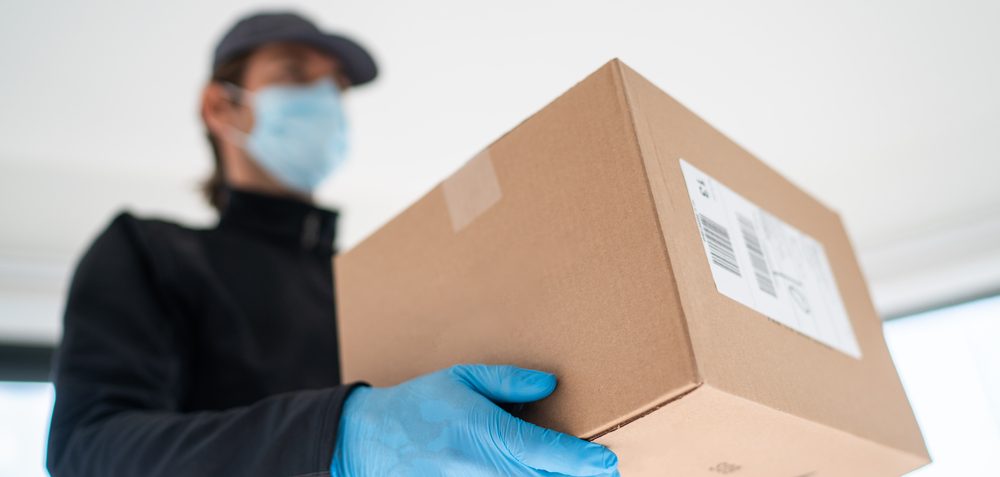Right now, in most markets, the percentage of deliveries received at home is at its highest level in years, and successful first-time deliveries are reaching unprecedented peaks. In spite of those facts, the carriers and postal operators delivering those parcels are keener than ever to break the monopoly of home delivery, and to upgrade their own offerings in out-of-home delivery.
Let’s set the scene. Outside of Sweden, Poland and China, pretty much every major e-commerce market treats delivery the same, by bringing millions or even billions of parcels directly to front doors. Historically, when the postie was already making daily rounds and parcel volumes were relatively low, it was the natural option to just add a parcel into the hundreds of letters being delivered every day.
That set the baseline for consumer expectations back in the 1990s when consumers were first dipping a toe into e-commerce, and the status quo hasn’t really been challenged since then. That’s in spite of the fact that widespread e-commerce adoption has turned that initial trickle into a deluge, expected to total 200 billion parcels delivered annually by 2025. It’s been a constant race for parcel carriers and posts to keep up with demand, and they’ve been impressively successful thus far. And then, the Covid-19 tidal wave hit.
The huge increase in parcel volumes thanks to Covid-19 was a sharp shock to the system, a vision of demand spiraling out of control and of insufficient space, people and time to manage it all. Of course, posts and carriers adapted fast, and the worst consequences were very much temporary, but it was an unmissable warning shot. It was all hands to the pump, and many posts and carriers suffered a serious deterioration in operating performance.
The impact was huge. In addition to the rises shown above, the likes of An Post, Yamato and Australia Post all reported parcel volume growth well over 50% year-over-year.
Right now, the industry has a handful of years before those exceptional volumes become the norm. In that time, we will of course see a continued investment in infrastructure: in more vehicles, more sheds, more urban depots, more people, etc. But the question has to be asked: can posts and carriers afford to keep building, hiring, and driving more forever?
For some, maintaining that level of investment for as long as e-commerce keeps growing will become economically unsustainable. For others, it’s just undesirable. Either way, the growing recognition is that the alternative is to reduce the percentage of parcels they deliver to-door, to consolidate deliveries and improve capacity without building new infrastructure, by routing more deliveries through out-of-home delivery or pick-up and drop-off (PUDO) options.
China – a market in which 33.9 billion parcels were delivered in the first half of 2020 – realized this a long time ago, and the market has been flooded with around 350,000 locker banks and one million parcel shops to provide guaranteed first time delivery at B2B locations and the ability to consolidate drop-offs.
This is why in the past few months we’ve seen a rapid progression of PUDO projects around the world, with major national and international parcel carriers and posts investing in long-term efforts to both improve their out-of-home delivery options and encourage more consumers to adopt them. One senior figure we spoke to at a national post described their transformation timetable as having shrunk from five years to one year.
So what steps are carriers taking? In Japan, Yamato just signed a historic deal with Doddle as part of its Next 100 transformation plan, with the intention to further the development of their nationwide PUDO network. For Yamato, PUDO is part of their twin focus on sustainability and customer-centricity – pick-up and drop-off locations will enable more flexibility for consumers in the world’s fourth largest e-commerce market, where home deliveries currently hold a 99% share.
We can look also to Amazon. Amazon Hub is the Seattle giant’s PUDO brand, which it has until recently allowed to develop and expand very rapidly but near-silently. Now, however, it is pushing incentives to UK customers to try Hub pickups by offering £5 (US$6.5) discounts for their next order collected from an Amazon Hub location. Amazon has the dual role of retailer and carrier for many of its own parcels, which gives it a remarkable insight advantage into the effectiveness of PUDO for customer, retailer and carrier alike. While that data remains only for Amazon’s eyes, it would appear to be quite compelling judging from the fact that Hub is on course to be the world’s largest PUDO network, active in seven markets (the USA, the UK, Italy, France, Spain, Australia and Canada).
Finally, in Australia, Australia Post has rapidly rolled out its Collect & Return PUDO offering to post offices and third-party stores in partnership with Doddle. The service is designed to maximize the value of their extensive post office network and its role in local communities, as well as improve the sustainability of Australia Post’s overall delivery network.
In short, Covid-19 might be making consumers spend much more time at home, but it has made carriers around the world pull back from focusing exclusively on home deliveries.



